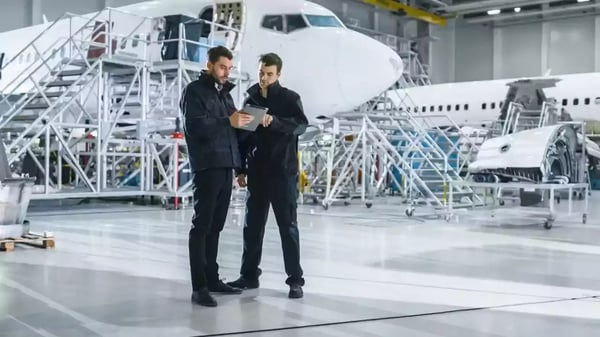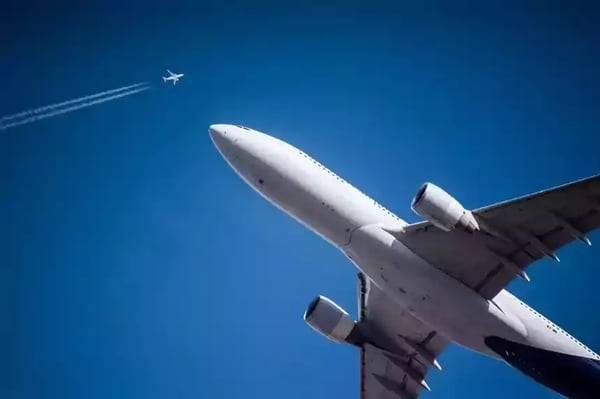The aircraft maintenance industry is rapidly evolving due to technological advancements and shifting operational
demands. Drawing from my experience in this field, I have observed key trends shaping the industry, as well as persistent challenges in workforce allocation and production planning. To remain efficient and competitive, organizations must leverage advanced digital solutions. This article explores major trends, discusses workforce
management challenges, and highlights how QOCO’s Assignment solution addresses these issues effectively.
KEY TRENDS IN AIRCRAFT MAINTENANCE
-
Several major developments are reshaping aircraft maintenance:
-
1. Predictive Maintenance and Data-Driven Decision-Making
-
Traditionally, aircraft maintenance has been reactive, addressing problems only after failures occur. However, advancements in artificial intelligence (AI) and data analytics have enabled predictive maintenance, allowing operators to anticipate issues before they arise. By using real-time data from aircraft sensors, airlines can optimize maintenance schedules, reduce unexpected downtime, and improve overall efficiency.
2. Augmented Reality (AR) and Virtual Reality (VR) for Training and Inspections
-
A growing skills gap in aviation maintenance has made it essential to accelerate technician training. AR and VR technologies provide immersive, hands-on learning experiences that enhance skill acquisition and ensure standardized training across organizations. These technologies also help new technicians gain expertise faster while reducing dependency on seasoned professionals nearing retirement.
-
3. Extended Aircraft Service Life and Its Impact on Maintenance -
Many airlines are operating older aircraft longer due to economic and supply chain constraints. While this approach maximizes asset utilization, it also increases maintenance demands, requiring more frequent inspections, part replacements, and structural checks. Managing these increased workloads efficiently is crucial to avoiding costly delays and operational disruptions.
-
4. Digitalization and the Shift to Paperless Maintenance -
Traditionally, maintenance documentation relied on manual record-keeping, which led to inefficiencies and errors. The transition to digital records enhances data accuracy, reduces administrative burden, and improves real-time decision-making. Digital maintenance platforms streamline operations, ensuring that technicians and planners have immediate access to critical information.

CHALLENGES IN WORKFORCE ALLOCATION AND PRODUCTION PLANNING
Despite technological progress, workforce management remains a complex challenge. Key issues include:
-
1. Shortage of Skilled Maintenance Technicians
-
The industry is experiencing a severe talent gap, with retirements outpacing new hires. It has been estimated that in the forthcoming years, there will be a global shortage of approximately 700,000 skilled aircraft technicians. This shortfall places significant pressure on existing staff, leading to inefficiencies, higher operational costs, and potential safety risks. Addressing this issue requires a proactive approach, including enhanced recruitment strategies, investment in training programs, and the adoption of advanced workforce optimization technologies
-
-
2. Lack of Coordination Between Key Departments
-
Effective maintenance planning requires seamless collaboration between flight operations, maintenance teams, and workforce management. However, many organizations struggle with disconnected processes, leading to scheduling conflicts, underutilized personnel, and prolonged aircraft downtime.
-
3. Inflexible Workforce Scheduling Systems
-
Aircraft maintenance schedules must be adaptable to unpredictable changes such as flight delays, unplanned repairs, and last-minute staffing shortages. Many organizations still rely on static scheduling systems that lack real-time flexibility, making it difficult to adjust efficiently to operational disruptions.
“AI-driven scheduling tools enhance workforce allocation by matching technicians to tasks based on skill level, availability, and urgency. These systems help optimize labor distribution, ensuring maintenance operations run smoothly while reducing costs.”
SOLUTIONS FOR OPTIMISING WORKFORCE ALLOCATION
To overcome these challenges, the industry must adopt a combination of technological solutions and workforce strategies:
-
1. Integrated Digital Platforms for Maintenance Planning
-
A centralized system that connects flight schedules, maintenance plans, and workforce availability improves visibility and coordination. Real-time access to data enables proactive decision-making and more efficient task allocation.
-
2. AI-Powered Workforce Optimization
-
AI-driven scheduling tools enhance workforce allocation by matching technicians to tasks based on skill level, availability, and urgency. These systems help optimize labor distribution, ensuring maintenance operations run smoothly while reducing costs.
-
3. Investment in Technician Workforce Growth and Development
-
Addressing workforce shortages requires not only investment in training but also a significant increase in the number of skilled technicians. However, hiring remains a considerable challenge due to the global shortage of qualified personnel. Organizations must adopt proactive recruitment strategies while ensuring that existing staff receive continuous professional development to enhance efficiency and retain talent.
QOCO’S ASSIGNMENT SOLUTION SOLVES WORKFORCE CHALLENGES
At QOCO, we developed QOCO Assignment to address these workforce management issues through an advanced digital approach:
-
1. Comprehensive Digital Integration
-
Assignment connects flight operations, maintenance scheduling, and technician availability into a single platform, eliminating inefficiencies from separate, outdated systems.
-
2. Real-time Scheduling Adjustments
-
Unlike traditional static planning tools, Assignment dynamically adjusts workforce schedules in response to operational changes, minimizing downtime and improving efficiency.
-
3. Advanced Data Analytics For Better Decision-Making
-
The platform provides insights into workforce utilization, identifies bottlenecks, and recommends efficiency improvements, helping organizations to optimize maintenance processes.
-
4. Industry-Specific Design
-
QOCO Assignment is tailored for airlines and maintenance, repair, and overhaul (MRO) providers, ensuring it meets the unique challenges of aircraft maintenance workforce management. The Assignment solution plays a critical role in transforming workforce management by improving scheduling adaptability, enhancing coordination between departments, and enabling data-driven decision-making. By embracing these advancements, the aviation maintenance industry can become more efficient, resilient, and prepared for future challenges. From my perspective, adopting these innovations is essential to maintaining a competitive and well-functioning aircraft maintenance ecosystem.
CONCLUSION
As the aviation industry evolves, the need for digital workforce optimization is clear. Predictive maintenance, AI-driven scheduling, and immersive training technologies are revolutionizing traditional maintenance strategies. However, effective implementation depends on integrating these innovations into existing workflows.


 Mikko Lietsalmi
Mikko Lietsalmi
 If you are interested in knowing how you can improve your efficiency in maintenance operations, book a 30-minutes discovery call with us.
If you are interested in knowing how you can improve your efficiency in maintenance operations, book a 30-minutes discovery call with us.

.webp?width=600&name=blog%2084%20(1).webp)